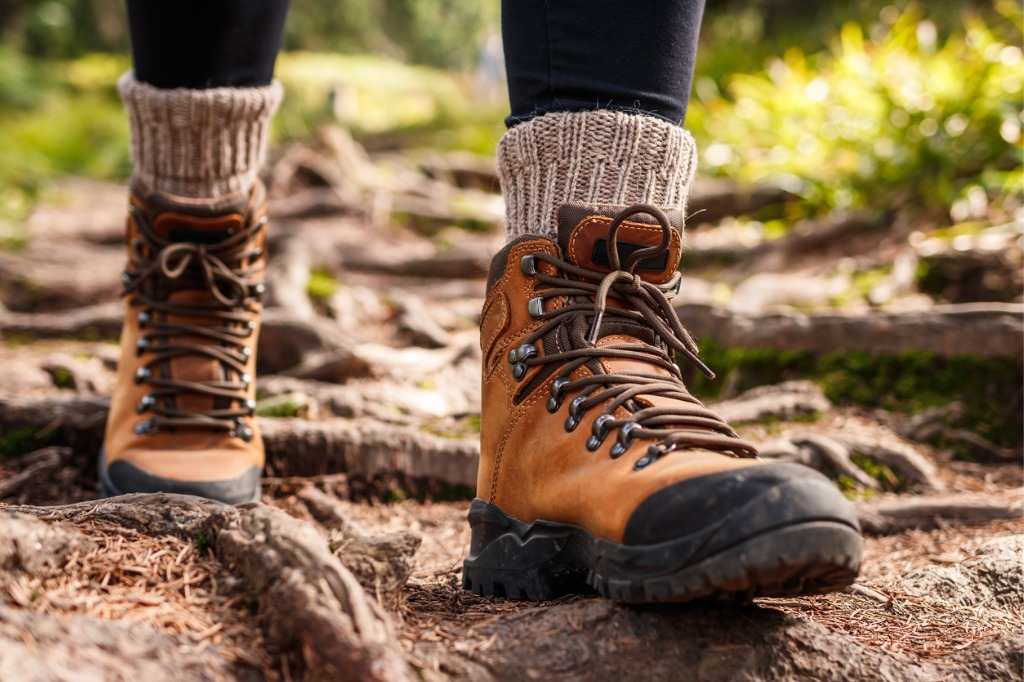Hiking is a popular summer activity that offers a multitude of benefits, from cardiovascular fitness to mental health improvements. However, like any physical activity, it comes with its share of risks. Hiking safety is especially crucial when out on the trails. Among the most common dangers are injuries to the knees and ankles. These joints bear the brunt of the body’s weight and are particularly susceptible to strains, sprains, and fractures when hiking, especially on uneven terrain. Before you go hiking, keep the following safety tips in mind and take the necessary steps to protect your knees and ankles.
Understanding the Risks
When hiking, your knees and ankles are exposed to a variety of potential risks. These joints are complex structures that provide flexibility and stability. When hiking, they absorb the impact of each step, adjust to varying terrains, and carry the additional weight of your backpack. This constant pressure may lead to overuse injuries, especially if you’re not taking the necessary precautions.
Hiking Safety Tips
Prior to lacing up your boots and exploring the great outdoors, it’s vital to understand how to hike safely to minimize the risk of injury. In the following sections, we’ll delve into specific hiking safety tips that can help safeguard your knees and ankles. From the right footwear and gear to proper hiking techniques and post-hike recovery, these strategies are designed to boost your hiking efficiency while protecting your joints. Remember, hiking safety should always be your priority.
Wear Proper Footwear
Wearing the right shoes is one of the most important aspects of hiking safety. Quality footwear offering ample ankle and arch support can help reduce strain on your knees and ankles while protecting you from more serious injuries like fractures.
Investing in the right footwear may significantly enhance your hiking experience by ensuring comfort and reducing the risk of injuries. Here’s a quick guide to help you select the best shoes for your next adventure:
- Fit: Your hiking boots should be snug but not tight, with enough room to wiggle your toes.
- Support: Opt for boots that provide good ankle support, which is especially important when carrying a heavy backpack or navigating uneven terrain.
- Material: Choose durable, water-resistant materials like leather or synthetics to withstand various weather conditions.
- Sole: The boot’s sole should offer good traction and be sturdy enough to protect your feet from sharp objects.
- Socks: Don’t overlook the importance of socks. Choose wool or synthetic socks for their cushioning, friction reduction, and moisture-wicking properties.
Use Hiking Poles
Another important aspect of hiking safety is the use of hiking poles. These tools are not just for the elderly or those with mobility issues; they may significantly reduce the impact on your knees, ankles, and lower back, particularly on steep inclines or rugged terrain.
Selecting the right hiking poles is as crucial as choosing the right shoes. Consider these elements when choosing your hiking poles:
- Size: Your hiking poles should be the correct length for your height. When standing on flat ground with the poles at your side, your elbows should be at a 90-degree angle. Most hiking poles are adjustable, allowing you to change their length depending on the terrain.
- Material: Aluminum poles are durable and affordable, while carbon fiber poles are lighter but more expensive. The right choice depends on your hiking needs and budget.
- Grip: Look for grips made of comfortable, non-slip materials such as cork, foam, or rubber. Some grips come with wrist straps for added security.
- Tips: Most poles have carbide or steel tips to provide traction, especially on rocky or slippery surfaces. Some also come with rubber caps for use on paved surfaces.
By using hiking poles, you may improve your balance and stability, distribute your body weight more evenly, and provide relief to your lower body joints, making your hiking adventure safer and more enjoyable.
Stay In Good Physical Condition
Maintaining good physical condition is crucial for a safe hiking experience. Regular conditioning and strengthening exercises, such as cycling, swimming, and resistance training, build endurance and improve stability. Before you start your hike, warm up to increase your heart rate and circulation, and stretch your calves, quadriceps, hamstrings, and hip flexors to enhance flexibility and prevent muscle strains.
Post-hike recovery is equally important. Light stretching can alleviate muscle tightness, while hydration and a balanced meal replenish lost fluids and energy. Adequate rest allows your body to repair and strengthen itself. Remember, staying in good physical condition is a continuous process that significantly enhances your hiking performance and reduces the risk of injuries.
Use Proper Hiking Form
How you hold, move, and land your feet is crucial for hiking safety. Proper form helps reduce fatigue and conserve energy while minimizing the risk of ankle and knee injuries. Here are a few basic tips for proper hiking form:
- Keep your feet parallel and slightly wider than hip-width apart.
- Walk with the ball of your foot first, followed by your heel.
- Bend your ankles slightly and point them outward while going uphill and inward when descending.
- Avoid locking your knees.
- Keep your back straight and your head up.
Get Back on the Trail With Alliance Orthopedics
Hiking is a fantastic way to explore the great outdoors, but taking steps to protect your knees and ankles is crucial. Don’t let injuries keep you off the trail. At Alliance Orthopedics, we’re committed to helping you hike safely and comfortably. Whether you’re recovering from an injury or want to learn more about prevention, we’re here for you. Schedule your consultation today and take the first step toward a healthier hiking future. Your journey to wellness starts here.

